Overlooked. Underappreciated. Up-and-coming.
Not all worthy retirement havens abroad have yet landed on the mainstream map. Indeed, “hidden places” still exist... regions rich with untapped potential. Finding them is baked into our mission here at International Living. We’re always on the trail of those not-yet-well-known spots where the value is real but word on the street hasn’t yet caught up to the reality on the ground.
These are places you have to see for yourself to appreciate, and that’s why—since 1979—we’ve been sending our guys out in search of them. Not internet research. Not second-hand hearsay. Real people who live in the countries they’re writing about or travel the area often, putting boots on the ground, checking out what’s really going on. And they’re finding those gems few other people know about yet.
Over the years, our findings have rewarded far-sighted expats by pointing them to regions poised to boom, and getting them there before anybody else was paying attention.
In the early 80s, we pointed readers to Lake Chapala, Mexico. In the mid-90s, we sent them to Placencia, Belize. In the early 2000s, we put Cuenca, Ecuador on the expat map. And these are just three of the many dozens of under-appreciated spots we’ve turned readers on to over the last four decades.
How To Move Out of the U.S.
How To Move Out of the U.S.
The policy implications of the last election impacted your retirement funds, taxes, healthcare, and more. But you can protect yourself, your family, your future. In lots of safe, warm, friendly spots abroad, you can live comfortably on a budget from $2,000-$3,800 a month (all-in—housing and extras included). We’ll show you how—and where—to go.

By submitting your email address, you will receive a free subscription to IL Postcards, The Untourist Daily and special offers from International Living and our affiliates. You can unsubscribe at any time, and we encourage you to read more about our Privacy Policy.
Communities everywhere live along a continuum, of course. Every town, city, and village evolves—economically and socially—as time marches on, and its appeal changes. As a place becomes better known as an expat haven, the property market matures, locals begin catering to an increasingly foreign clientele, more international restaurants open, hotels are built, often the tourism industry grows. And prices increase. Sometimes beyond all reason, admittedly. But, just as often—as is the case with these three spots I mentioned (Lake Chapala, Placencia, and Cuenca)—the good values remain (if not the rock-bottom pricing), and what you get for that greater outlay is more ease and convenience day-to-day.
Tried-and-true destinations remain popular—with reason (they offer exactly the sort of benefits expats are looking for). Still, we’re always on the trail of those “next” places... lesser-known regions that combine affordability with untapped potential. These up-and-coming regions are often rich in culture, natural beauty, and opportunities for expats to build fulfilling new lives, yet they remain off the beaten path—at least for now.
For this special report, we’ve scouted six emerging retirement regions poised today to gain international recognition in the years to come and worth your attention in 2025. These destinations offer all the essentials—friendly communities, comfortable climates, and excellent value—but with the added appeal of being ahead of the curve. From quiet coastal gems to thriving inland havens, these regions are the places to watch now if you’re a retiree looking for a new adventure in a place that’s unique and undiscovered.
The Azuero Peninsula, Panama
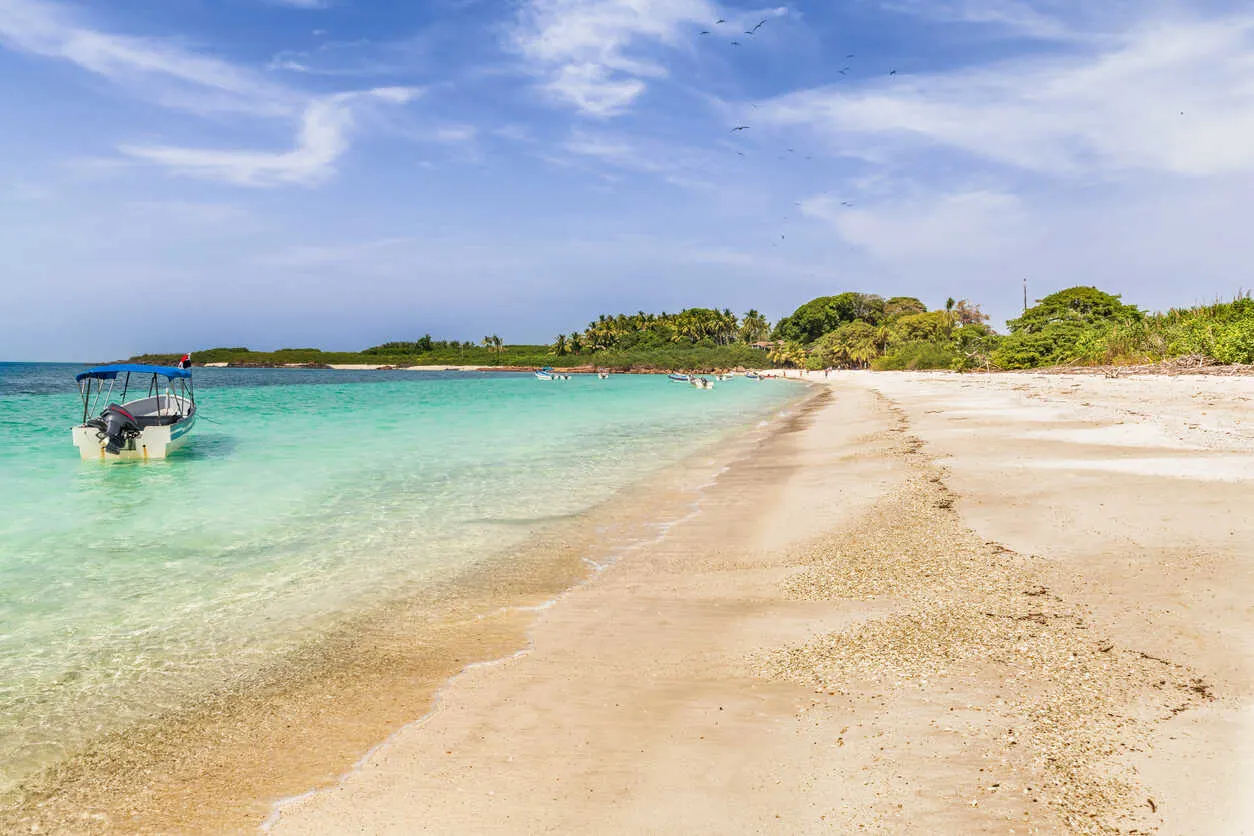
By Jim Gault and Abbe Drossner
The Azuero Peninsula is a five-hour drive from Panama City and serves as the cultural heart of Panama, hosting Carnival and various galas and celebrations. Enriching experiences with music, dance, costumes, bullfights, and fabulous local cuisine make this area the cradle of Panamanian folklore. Carnival and the Thousand Polleras Festival showcase some of the most artistic and beautiful costumes and dresses in the world.
Miles of rolling country roads pass through fields of corn, rice, and grazing cows, sheep, and horses. This idyllic scenery evokes memories of small-town America from 50 years ago. Proximity to the ocean, a reduced cost of living, and a slower pace of life create an excellent environment for living. The region is home to several welcoming small towns and the small cities of Las Tablas and Chitré. Dozens of uncrowded sandy beaches and world-class fishing make it possible to enjoy fresh, inexpensive tuna, snapper, amberjack, and dorado almost daily.
Major attractions include the small-town charm, clean ocean air, friendly locals, and established expat communities. The tiny fishing village of Pedasí, where my wife and I moved in 2015, boasts the largest expat community in the region.
A significant draw for residents is the healthier outdoor lifestyle. Whether it’s exercising, entertaining, or enjoying a gourmet meal with friends, life here is centered around the outdoors. Relaxing in a hammock with cool sea breezes turning your book’s pages is a common pleasure. Water activities such as fishing, surfing, whale watching, snorkeling, diving, and kayaking provide endless recreational opportunities.
The Iguana Wildlife Refuge, just five kilometers off the coast, is a popular destination. This island features a tropical rainforest and around 100 acres of coral, attracting visitors from around the globe. Activities include birdwatching, snorkeling in clear waters, and admiring iguanas and hermit crabs scurrying across pristine white sand beaches.
Life in the Azuero feels like paradise. We enjoy the perks of living in a quaint Pacific coast fishing village, with most of the conveniences of southwest Florida just a leisurely one-hour drive away.
We eat and feel healthier here. Fresh fruits and vegetables, grown year-round in Panama’s fertile soil, are readily available at markets and roadside stands. The weather is beautiful, encouraging outdoor activities and fostering a “blue” lifestyle. Walking along the beach with our three rescue dogs, watching glittering sunrises and frolicking whales, has become a cherished routine. The beaches and Pacific waters are so clean that giant sea turtles return to lay their eggs, continuing their life cycle.
Get Your Free Panama Report Today!
Get Your Free Panama Report Today!
Learn more about a healthier outdoor life in Panama in our daily postcard e-letter.
Simply enter your email address below and we'll send you a FREE REPORT -- Panama: Easy, First-World Living and the World’s Best Retiree Program.

By submitting your email address, you will receive a free subscription to IL Postcards, The Untourist Daily and special offers from International Living and our affiliates. You can unsubscribe at any time, and we encourage you to read more about our Privacy Policy.
Expats and locals frequently join forces to support community events. Volunteers coach gymnastics, judo, karate, soccer, music, basketball, baseball, Spanish, English, and art. Several animal welfare groups also work to improve the quality of life for pets and stray animals.
Families with children are moving to the area thanks to local, international, and homeschooling options. Remote work is achievable with high-speed internet and Starlink. WhatsApp groups, blogs, and social media platforms help residents meet, share information, shop, and fulfill various needs.
The cost of living in the Azuero is among the lowest in Panama. Food expenses, whether dining at home or eating out, are significantly cheaper than in other areas. Housing costs are much lower than in North America, whether you choose to live near the water or in a small village. Panama offers incredibly low property taxes, affordable insurance, and freedom from hurricanes, tornadoes, and snowstorms. Local labor for housekeeping, gardening, and household projects is available at very reasonable rates.
Real estate prices have remained stable in recent years, with unspoiled beachfront properties still accessible. Land parcels near villages provide opportunities to build custom homes. Oceanfront communities, such as Costa Pedasí, allow residents to enjoy stunning views of whales and fishing boats from their lanais. Lots in these communities are still available for purchase.
Living on the Azuero Peninsula offers an enhanced quality of life. Our friends Chris and Leigh moved here for health reasons, and Leigh now experiences fewer headaches and improved breathing. They love the home they built near the Pacific Ocean. Another couple, Wendy and Cyril, who initially planned to rent long-term, eventually purchased a home two blocks from the beach after falling in love with the Azuero.
Life in the Azuero and Pedasí continues to improve, offering a simple yet fulfilling lifestyle. Both locals and expats appreciate the region’s unique charm and exceptional quality of life. It’s easy to fall in love with the Azuero Peninsula, a place where body and soul can truly thrive.
Green Spain
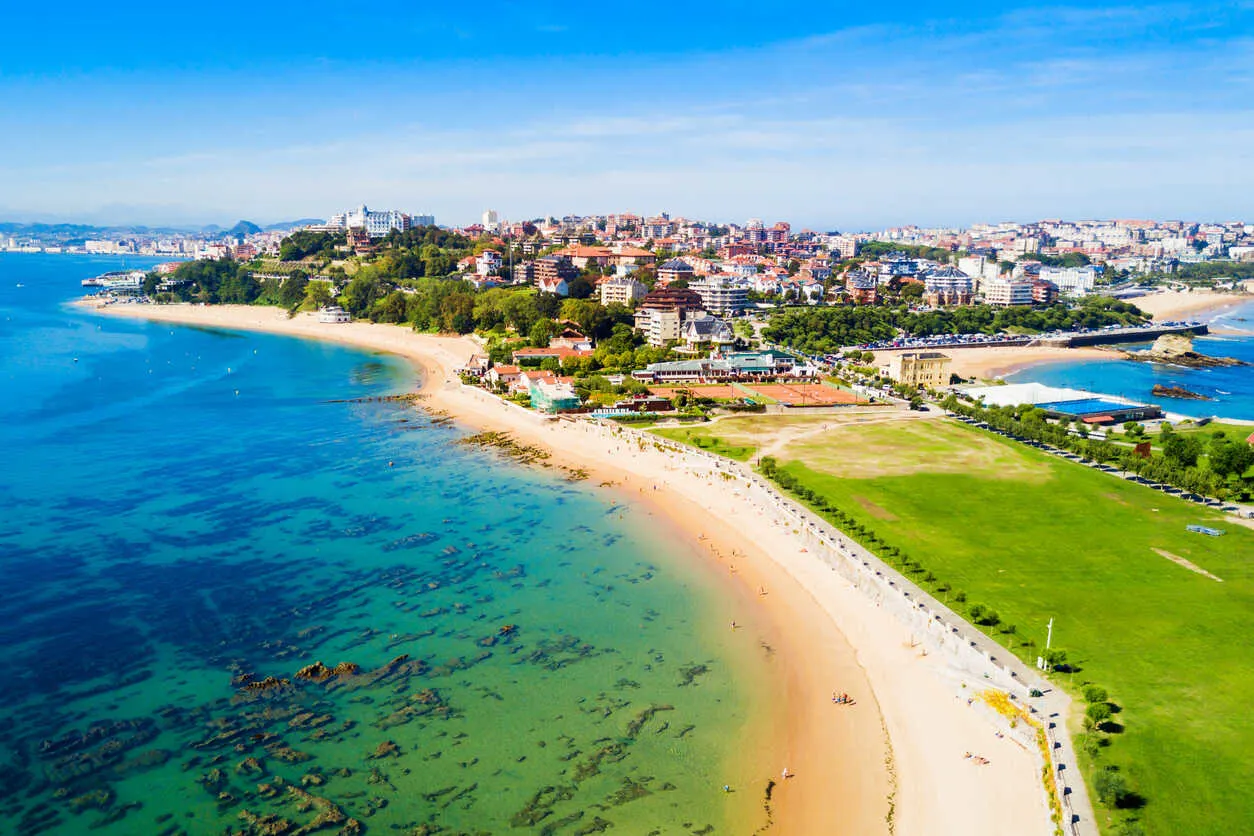
By Maria DiCicco
With the southern beach towns of Spain growing increasingly popular among tourists, retirees should instead look to the lush, verdant region along Spain’s northern Atlantic coast, including Galicia, Asturias, Cantabria, and the Basque Country. Here, natural beauty abounds, with rolling hillsides and green, fertile valleys nestled between mountain peaks like the Picos de Europa and stunning cliffs meeting the ocean shores.
As Green Spain's appeal grows, the secret is getting out. Breathtaking scenery, incredible historic sites, and charming villages are drawing gastronomists, outdoor enthusiasts, and retirees seeking a laid-back and quiet lifestyle to the area. These northern regions provide a variety of low-cost living options where urban convenience meets rural tranquility, from seaside villages to major gastronomic and cultural hubs.
Green Spain spans from Galicia in the far west, where the region meets the Atlantic Ocean, through Asturias and Cantabria, to the Basque Country, which borders France. The climate is similar to that of the United Kingdom, with mild, wet winters and warm summers. Along the seaside routes, charming villages, fishing towns, and uncrowded beaches offer a peaceful lifestyle. While the water may be cooler than in southern Spain, locals still enjoy soaking up the sun and sipping cold drinks at unpretentious beach bars or chiringuitos.
In the larger urban areas, commerce, finance, art, and culture thrive. Vitoria and Bilbao, both in the Basque Country, have undergone remarkable transformations. Once industrial cities, they are now popular retirement hubs known for art and culture, excellent healthcare, efficient transportation, and abundant activities for retirees.
City living costs in Green Spain average between €1,500 and €3,500 per couple, depending on location and lifestyle. Housing expenses are remarkably affordable, with rental prices for apartments ranging from €750 to €1,000 per month. Utilities—including phone, internet, heating and cooling, water, and electricity—add approximately €300 to monthly expenses. Groceries are another highlight; the cost of food is so low that hosting a dinner party for seven, complete with ribs, steak, chicken, potatoes, wine, and appetizers, can cost less than €50.
Get Your Free Spain Report Today!
Get Your Free Spain Report Today!
Learn more about the lower cost of living in Spain and other countries in our free daily postcard e-letter. Simply enter your email address below and we'll also send you a FREE REPORT — Live the Good Life in Sunny, Affordable Spain.

By submitting your email address, you will receive a free subscription to IL Postcards, The Untourist Daily and special offers from International Living and our affiliates. You can unsubscribe at any time, and we encourage you to read more about our Privacy Policy.
Healthcare is either free under Spain’s public system or available through private insurance plans, which range from €50 to €200 per month, depending on the level of coverage. Transportation is essential for exploring the region, so retirees should factor in the costs of purchasing or leasing a car, as well as maintenance and fuel expenses.
Bilbao and San Sebastián in the Basque Country are more expensive, but they attract international residents and offer vibrant expat communities. University towns like Santiago de Compostela also have active expat networks. However, in most of northern Spain, English is not widely spoken, so having a foundational knowledge of Spanish is essential for an enriched and authentic retirement experience.
Transportation options are plentiful. Budget airlines like Ryanair and Vueling connect the region to European hubs, while overnight ferries to the UK offer a slow travel alternative. Marinas in Galicia and other northern towns provide excellent docking facilities for those with their own boats. Everyday life requires a car to access beaches, green spaces, medieval villages, and tourist attractions. Whether hiking, cycling, or dining in coastal cafes and cider houses, staying active is easy.
Gastronomy is a major draw, with each region offering unique specialties. Asturias is famed for its cheese production, Galicia for Albariño wine, and the Basque Country for its nightlife and tapas culture. Despite its rural character, the area boasts modern shopping facilities, including grocery stores, clothing boutiques, and malls in larger cities.
Given its striking landscapes, where cliffs meet emerald seas, and rolling hills thrive under seasonal rains, Green Spain offers a unique, affordable lifestyle away from the crowds of the south. Overtourism in southern Spain is likely to push retirees northward in search of quieter, cleaner green valleys. Green Spain—Galicia, Asturias, Cantabria, and the Basque Country—is exactly where they will find it.
If Green Spain sounds appealing, explore homes and prices at Idealista.com. Start by looking at cities like Oviedo and Santander, then expand your search to countryside areas. Towns like Cantabria’s Santander and San Vicente de la Barquera are consistently rated among the best places to retire in northern Spain for their high quality of life and safety.
For those seeking a new place to begin the next phase of life, Green Spain offers a better world. With daily adventures, relaxing routines, and a healthier, more affordable lifestyle, this region promises a fulfilling retirement. Keep an eye on northern Spain—it will undoubtedly be a top contender for retirees in 2025.
Coastal Montenegro
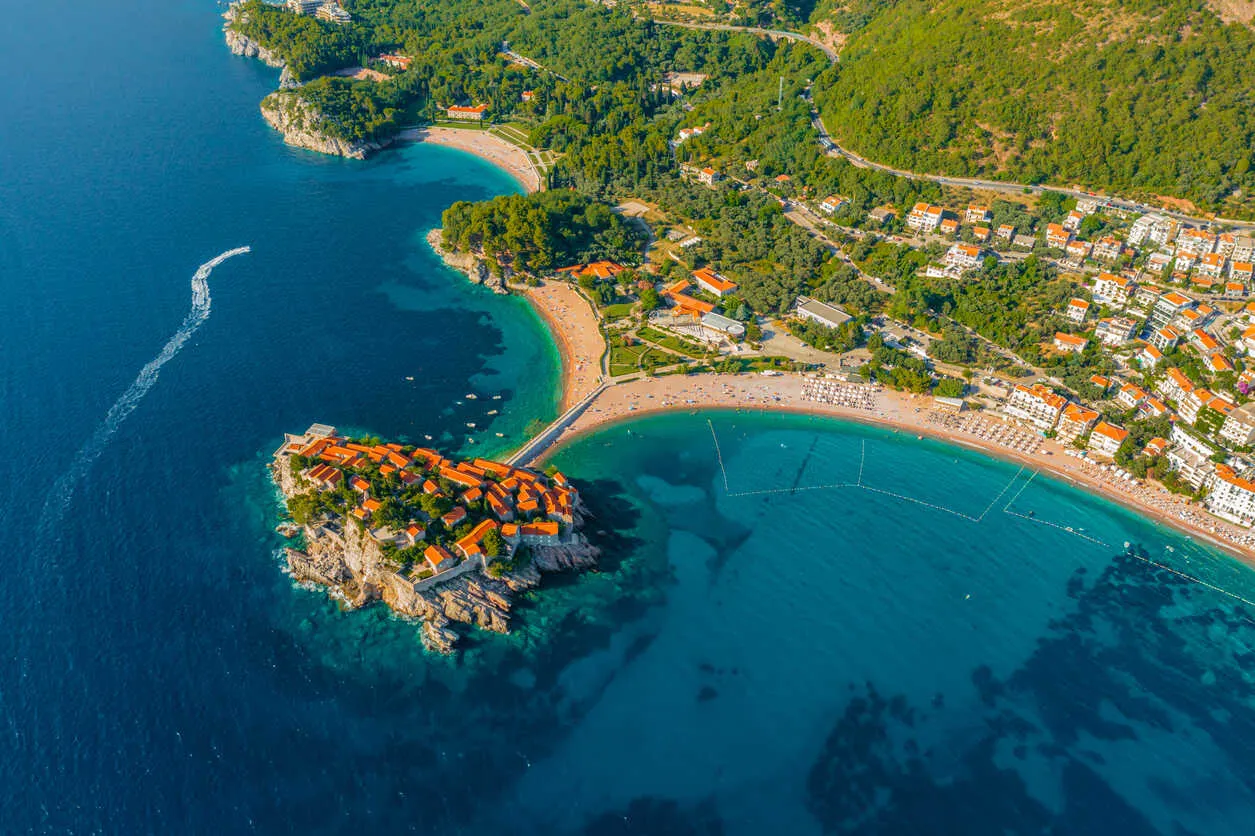
By Warren and Julie Knox
If you’re dreaming of retiring somewhere that’s as affordable as it is beautiful, Montenegro might just be your perfect match. Tucked along the stunning Adriatic coast, this little country is quickly becoming a favorite among retirees looking for a relaxed lifestyle without breaking the bank. With its breathtaking landscapes, charming seaside towns, and rugged mountains, Montenegro offers a unique blend of nature and culture—while keeping costs low. Whether you’re drawn to the affordable housing, mouthwatering seafood, or the peaceful vibe, this hidden gem is quickly becoming a top choice for a fulfilling retirement.
Montenegro’s expat community is growing fast, and it’s easy to see why. People from all over the world are flocking here to enjoy its natural beauty, affordable living, and friendly atmosphere. Sea-view apartments remain accessible, with long-term rental prices starting at around $450 per month. While property prices are rising, it’s still possible to find a studio in places like Tivat for under $100,000. Exploring less touristy spots, such as Bar, can yield even better deals, with larger apartments renting for as low as $400 or properties available for as little as $80,000. For those seeking luxury, Montenegro offers high-end properties that rival Monaco, complete with stunning views and world-class amenities. With improved roads and increasing flights, Montenegro is becoming a year-round destination, enhancing its appeal for those seeking a vibrant yet affordable place to live.
Montenegro’s allure lies in its stunning landscapes, laid-back lifestyle, and affordability compared to many Western European countries. The country’s magnetic charm draws retirees from diverse backgrounds, whether they’re escaping harsh northern winters or seeking a slower pace of life. The expat community is welcoming, united by a shared love for Montenegro’s tranquil coast and mountainous terrain.
Outdoor enthusiasts will find their paradise in Montenegro. Winter offers skiing opportunities, while summer offers activities like river rafting, snorkeling, scuba diving, and paddleboarding. Hiking trails and national parks abound, ensuring no shortage of exploration for nature lovers. Montenegro’s blend of rich history and modern growth adds to its vibrant atmosphere, creating a unique experience that sets it apart from other destinations.
Montenegro’s visa situation provides an added benefit for travelers. As the country is not part of the Schengen Zone, non-EU visitors can stay for 90 days within every 180-day period. This makes Montenegro an ideal base for long-term travelers or digital nomads, offering a convenient way to reset the Schengen clock. Additionally, its proximity to Croatia allows for easy travel between the two countries, enhancing its appeal as a hub for exploring the region.
Living in Montenegro offers a comfortable and affordable lifestyle. Compared to Western Europe, the cost of living is significantly lower. A budget of under $2,000 per month can cover all expenses, including housing, groceries, and dining out. Groceries are approximately 40% cheaper than in Italy or France, and restaurant dining is 30-40% less expensive. A meal for two at a mid-range restaurant costs around $20-30, a bargain compared to most Western European cities. Fresh, delicious seafood is abundant and affordable, thanks to Montenegro’s location along the Adriatic. Whether budgeting or indulging in local delicacies, residents enjoy the best of both worlds.
Looking ahead, Montenegro is a country to watch. As a NATO member with plans to join the European Union in 2028, its future is bright. Coastal areas, especially around Kotor Bay, are becoming prime investment opportunities with rising property values and a booming short-term rental market. Montenegro offers the charm and beauty of neighboring Croatia but without the hefty price tag. For investors and retirees alike, Montenegro promises a vibrant yet affordable lifestyle.
The World’s Best Retirement Havens for 2026
The World’s Best Retirement Havens for 2026
24 Countries Compared, Contrasted, Ranked, and Rated. You don’t have to be rich to enjoy a pampered retirement, you just need to know where to go. With our 35th Annual Global Retirement Index, our experts hand you a detailed roadmap. Details—and a Special Offer—Here

By submitting your email address, you will receive a free subscription to IL Postcards, The Untourist Daily and special offers from International Living and our affiliates. You can unsubscribe at any time, and we encourage you to read more about our Privacy Policy.
Northern Portugal
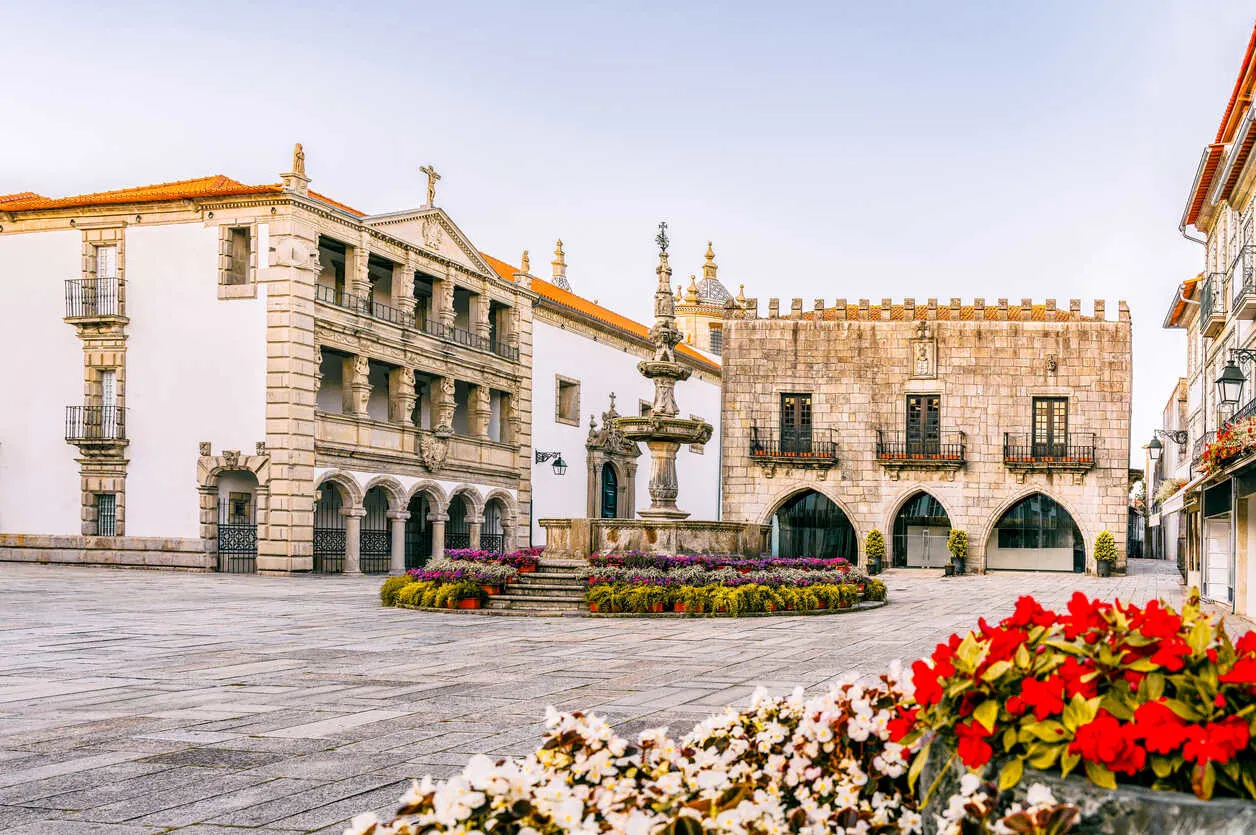
By Terry Coles
Rugged mountains blanketed with morning mist cast shadows over emerald, sun-kissed pastures dotted with sheep. Majestic tiled plazas, fortified villages, and corner cafés entice visitors to stop and pull up a chair.
Situated between the Spanish province of Galicia and the Atlantic Ocean, Northern Portugal is the birthplace of the nation. This hidden gem is less overrun with foreigners and tourists than Lisbon, Porto, or the Algarve, offering more affordable living without sacrificing modern conveniences. Undiscovered towns like Caminha, Viana do Castelo, and Esposende provide high-quality living, superior healthcare, welcoming people, and authentic Portuguese charm.
Active retirees, digital nomads, and families with children are discovering Northern Portugal as a budget-friendly option where they can immerse themselves in the culture and language while still benefiting from the safety net of English-speaking expats nearby.
Caminha, an appealing fortified border town, sits at the mouth of the Minho River. Once the site of battles between Spain and Portugal, it is now a peaceful stop along the well-known pilgrimage route, The Way of Santiago. This affordable haven features private and public hospitals, modern shopping, and a train and bus station, along with a growing community of English-speaking expats. Future residents can connect with others via Facebook groups such as “Expats Living in Viana do Castelo and Caminha.” Porto expats Charlie and Carol describe Caminha as having “a great downtown plaza, proximity to the beach, and a welcome break from city life.”
Viana do Castelo, a medieval city set between the Atlantic Ocean and the Lima River, offers a mix of cobbled lanes, ancient monuments, and modern amenities. Its compact old town is one of Portugal’s most spectacular and well-preserved, filled with tiled plazas, baroque churches, and historic landmarks. Expats have access to a private hospital, a modern clinic, shopping centers with cinemas, and an array of shops and restaurants. A bus and train station make it easy to live car-free while staying connected to the rest of the country.
Esposende, a former fishing village, has transformed into a seaside resort town along the banks of the River Cávado. The pristine beaches stretching from Esposende to Ofir and Fão feature white sands and turquoise waters. The old town is a maze of winding lanes, stately plazas, and inviting restaurants. Like other towns in Northern Portugal, Esposende offers a private hospital, modern shopping, and convenient public transportation options, enabling expats to live comfortably without a car. Facebook groups like “Northern Portugal Expats” help newcomers connect with those who have already embraced life in Portugal.
Rental prices for furnished apartments in these towns range from $530 to $750 per month. Utilities typically cost between $60 and $150, groceries around $400, and a Wi-Fi and cell phone package approximately $75. Transportation expenses average $200, dining out and entertainment $200, and private healthcare $250 per couple. A couple can live well in any of these locations for $2,000 per month or less, depending on their lifestyle. (Healthcare costs may increase with age, health conditions, and policy type.)
Daily life in Northern Portugal embraces simplicity and community. Start the day with a cup of espresso or cappuccino at a local café, paired with one of Portugal’s delectable pastries. Greet everyone with a cheerful “Bom dia” and “tudo bem,” which translates to “Is all good?” The enthusiastic response will come with a warm smile. The Portuguese love to celebrate, as evidenced by the many festivals throughout the year. Traditional costumes, folkloric dancing, and abundant food and wine bring neighbors together, sharing double-cheeked kisses and armfuls of garden-grown fruits and vegetables.
Get Your Free Portugal Report Today!
Get Your Free Portugal Report Today!
Discover why we love a slower pace of life in Portugal and info on other European countries in our daily postcard e-letter. Simply enter your email address below and we’ll send you a FREE REPORT – Explore the Old World in Laidback Portugal.

By submitting your email address, you will receive a free subscription to IL Postcards, The Untourist Daily and special offers from International Living and our affiliates. You can unsubscribe at any time, and we encourage you to read more about our Privacy Policy.
Carnival, the biggest party of the year, is a highlight, as are the vindima, traditional grape or olive harvests. These events allow newcomers to immerse themselves in the welcoming and sincere Portuguese culture.
Portugal has gained popularity in recent years among North Americans seeking to escape high costs, live in a safe and neutral country, and enjoy a high quality of life for less. Northern Portugal is the region to watch—an undiscovered gem with potential for substantial growth as more expats leave the U.S. for a better life abroad.
The Southern Zone, Costa Rica
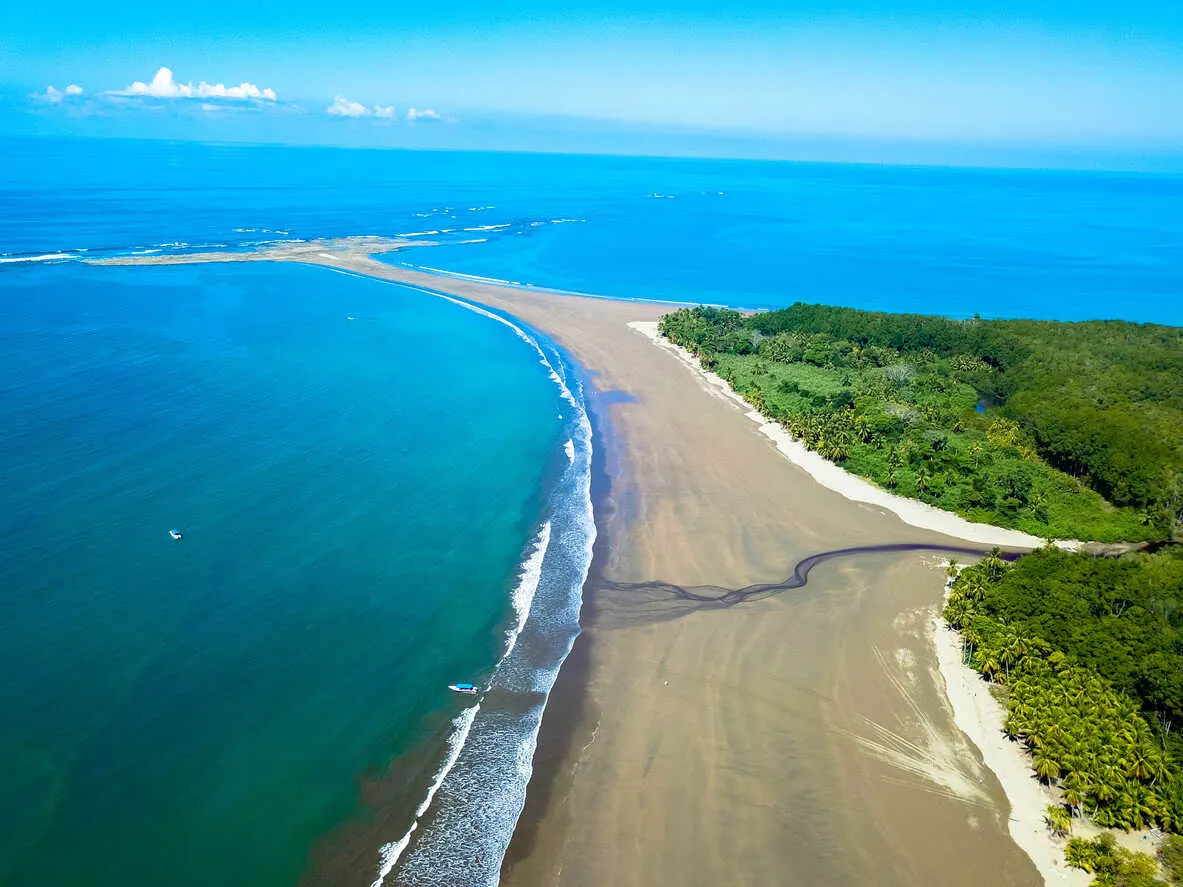
By David Bohn
Most mornings, we wake at five, watch the sunrise over Mt. Chirripó, feed the cat, and then put bananas on the bird feeder. Soon, an amazing rainbow of feathers bursts forth as the frenzy begins. That first cup of Costa Rican coffee is pretty special, too.
My wife, Christine, and I live near the small mountain city of San Isidro del General in the canton of Pérez Zeledón. We moved to the Southern Zone in 2015. After two exploratory trips, we decided we wanted a more intimate relationship with the natural wonders and a small-town vibe, rather than the frenetic life and higher costs in and around the capital, San José. San Isidro seemed the perfect combination of lush green mountains, a cool higher elevation, nearby waterfalls, and other attractions while still providing enough infrastructure to meet our needs.
With a population of 45,000, San Isidro offers most of the shopping we need and a well-staffed, fully equipped modern hospital. They did a flawless job on Christine’s knee replacement last year. As residents, we pay into the socialized medicine program, which we have used for over five years with great results. What really sealed the deal for us was the small-town charm of the warm and friendly people, always quick to befriend new arrivals with a smile and a polite greeting.
We live just below San Isidro on the well-traveled two-lane road to Dominical, a funky little beach town favored by surfers. At 3,200 feet, our house stays comfortable year-round, with temperatures between 70 and 85 degrees. The views of the surrounding mountains change dramatically throughout the day, and the calls of howler monkeys echo at dawn and dusk through the dense forests. A half-hour trip down the mountain takes us to Dominical, where we sit on the beach watching surfers battle the waves. There are plenty of small restaurants there, and a modern supermarket has recently opened.
From Dominical, you can travel on the well-maintained Costanera, the coastal highway that opened up the Southern Zone when it was completed in 2010. An hour’s drive north from Dominical brings you to Quepos and its famous park, Manuel Antonio. The newly finished Marina Pez Vela there offers world-class sport fishing, featuring billfish and many other species. (Jackpot Fishing aboard the Good Day is always a good bet.) An hour and a half south of Quepos on the Costanera is Uvita, home to Playa Ballena and the calving grounds of humpback whales in spring and fall. Boat tours among these gentle giants and their offspring are stunning.
Another twenty minutes south takes you to Ojochal, which has recently emerged as an upscale area favored by retirees from around the world. It features gourmet restaurants and exclusive shops. Lots on the mountainside above the town offer long views of the Pacific and upscale homes with infinity pools and designer kitchens. These houses range from $400,000 to $1,500,000. Social life in Ojochal revolves around lavish house parties or dining with friends at upscale eateries in the area. There is even a surprisingly playable nine-hole golf course just south of Ojochal.
Free Access: Retire to Costa Rica Summit
Free Access: Retire to Costa Rica Summit
Join Us to Discover What Makes Costa Rica the Easiest Place on the Planet to Retire... and One of The Most Desirable Retirement Havens, too. You’ll see how you could join more than 70,000 Americans—many of them retirees, and those seeking an early retirement, but also families, veterans, couples, and singles that have already found Pura Vida (the Good Life) in Costa Rica.
Sign up for our free daily postcards, and you'll receive complimentary access to our Costa Rica Summit PLUS our latest research reports.

By submitting your email address, you will receive a free subscription to IL Postcards, The Untourist Daily and special offers from International Living and our affiliates. You can unsubscribe at any time, and we encourage you to read more about our Privacy Policy.
Life in the Southern Zone offers a wide range of housing options. Renting before purchasing is strongly advised, as buying real estate in Costa Rica can present surprises for first-time buyers. Furnished rental houses range from $700 to $3,000 a month, depending on location and amenities. Becoming informed before purchasing will save headaches, as will hiring a well-recommended attorney. Houses near San Isidro range from $100,000 to $500,000, many with pools. Property in the mountains above town has seen significant development in recent years in areas such as Miravalles and Rivas. The views of the city, especially at night, and the sunsets are spectacular. Furnishings and appliances are expensive here due to heavy import duties.
Many residents take trips to Golfito, just above Panama, where the government established a duty-free zone after the banana export business collapsed. There, you can purchase appliances and liquor duty-free. Elsewhere, a 13% sales tax applies, supporting health care, education, and other systems.
One of San Isidro’s outstanding features is the huge municipal farmers market in town. In the center of a large agricultural area, San Isidro offers the freshest produce from local farmers at reasonable prices. Meeting them and exploring the range of exotic local vegetables is always a delight.
If you’re considering a move to Costa Rica, the Southern Zone deserves serious consideration. It offers the perfect combination of civilization and a Garden of Eden-level paradise. As infrastructure continues to grow, this area is likely to attract more development. Costa Rica has a strong track record of carefully managing growth to benefit its top industry, tourism.
The stunning beaches remain largely undeveloped from Quepos to Panama, but the completion of the Costanera has made them accessible within a three- or four-hour drive from San José’s airport. There is even talk of expanding one of the private airports farther south into an international airport. Life in the land of the unofficial national motto, Pura Vida, isn’t perfect—but it’s as close as we need it to be.
The Peloponnese
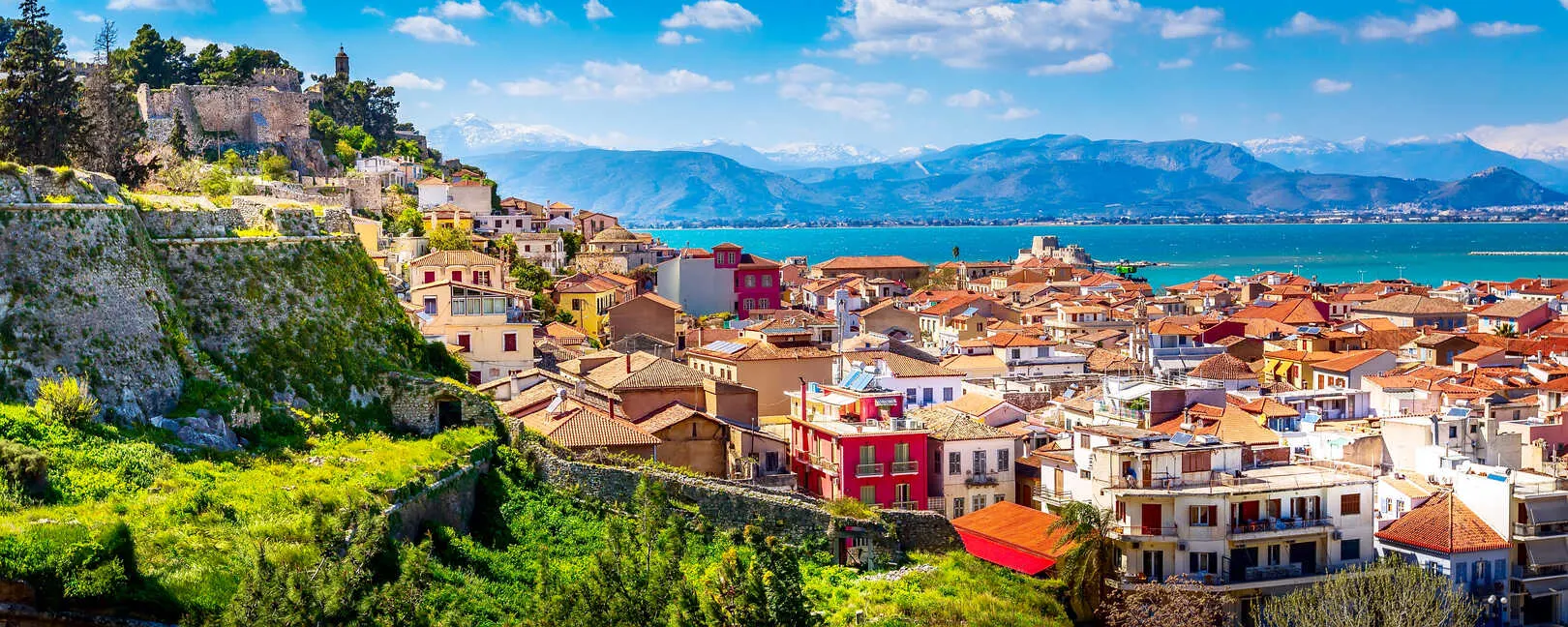
By Lynn Roulo
The Peloponnese, the southern part of mainland Greece, is steadily gaining popularity as a tourist and retirement destination. Known for its easy accessibility to Athens, this region offers the best aspects of the Mediterranean lifestyle without the hassle of ferry or air travel. Just a two-hour drive from Greece’s capital, the Peloponnese offers breathtaking landscapes, stunning beaches, amazing food, and a rich cultural history.
Covering approximately 8,320 square miles (21,550 square kilometers)—slightly smaller than Massachusetts—the Peloponnese is divided into seven major regions: Achaia (north), Corinthia (northeast), Argolis (east), Arcadia (center), Laconia (southeast), Messenia (southwest), and Elis (west). It is particularly famous for its “three legs,” or peninsulas, each with its own character and landscape.
The eastern Argolid Peninsula includes Nafplio, one of Greece’s most charming towns, and Monemvasia, often called the Gibraltar of the East. Ancient sites like Epidaurus and Mycenae add to its appeal. The central Mani Peninsula boasts rugged terrain, stone tower houses, and wild beauty, with picturesque villages such as Kardamyli, Stoupa, and Areopoli. The western Messinian Peninsula features lush olive groves, sandy beaches, and destinations like Pylos and Kalamata, renowned for its olives.
Twenty years ago, the Peloponnese was relatively unknown, but improvements in infrastructure have made it more accessible. American expat Richard Davis recalls, “We’ve been coming for over 40 years and have seen a lot of changes. The national road used to take six or seven hours to get from Athens to the Mani. Now, you can make it to Kalamata in just two and a half hours. That’s really changed the area.”
The cost of living in the Peloponnese is affordable compared to other European retirement destinations. Expats can live comfortably on less than $2,500 per month, depending on their lifestyle and housing choices. Renting a 750-square-foot apartment in Kalamata costs between $530 and $745, while in smaller towns like Arcadia, rents can be as low as $320. Utilities range from $50 to $150 per month, and a mid-range meal with wine at a taverna typically costs $16 per person.
For those considering property purchases, the popular site Spitogatos.gr provides a good starting point to explore options. Living in the Peloponnese also offers the advantage of proximity to Athens, where state-of-the-art medical facilities are easily accessible. This eliminates the need for ferry or air travel to receive top-tier healthcare, providing retirees peace of mind.
The Peloponnese is home to over 1,200 miles (2,000 kilometers) of coastline, including 40 Blue Flag beaches recognized for their environmental standards, water quality, and accessibility. Despite not being an island, its picturesque beaches and seaside villages rival those of Greece’s most famous island destinations.
Get Your Free Greece Report Today!
Get Your Free Greece Report Today!
Learn more about a slower pace of life in Greece and other countries in our free daily postcard e-letter. Simply enter your email address below and we'll also send you a FREE REPORT — Retire in Greece—Find Your Dream Retirement in This European Archipelago.

By submitting your email address, you will receive a free subscription to IL Postcards, The Untourist Daily and special offers from International Living and our affiliates. You can unsubscribe at any time, and we encourage you to read more about our Privacy Policy.
The region boasts a thriving expatriate community in towns like Kalamata, Stoupa, and Nafplio. This growing international presence has led to an increase in English-speaking services, social groups, and activities tailored to foreigners. Sandra Cherk, an American resident, notes, “We really enjoy our lifestyle here because there are so many fewer cars, fewer people, and fewer obligations, along with so many beautiful places to explore. Our friends are more relaxed, and it’s easy to spend time with them.”
Life in the Peloponnese follows a slower pace in harmony with nature. Locals and expats alike enjoy long lunches, peaceful hikes, and beach outings infused with tsipouro, a local spirit. Fall brings opportunities to join olive harvests, while summers are filled with seaside taverna lunches and cultural festivals.
With its affordable living costs, expanding expatriate community, and increasing amenities catering to international residents, the Peloponnese is a region to watch. As the appeal of Mediterranean living grows, it stands out as a gem offering both an authentic Greek lifestyle and a comfortable environment for retirees and digital nomads. Whether you’re drawn by scenic landscapes, welcoming communities, or the chance to embrace a slower pace, the Peloponnese has everything needed for a fulfilling and beautiful home base.
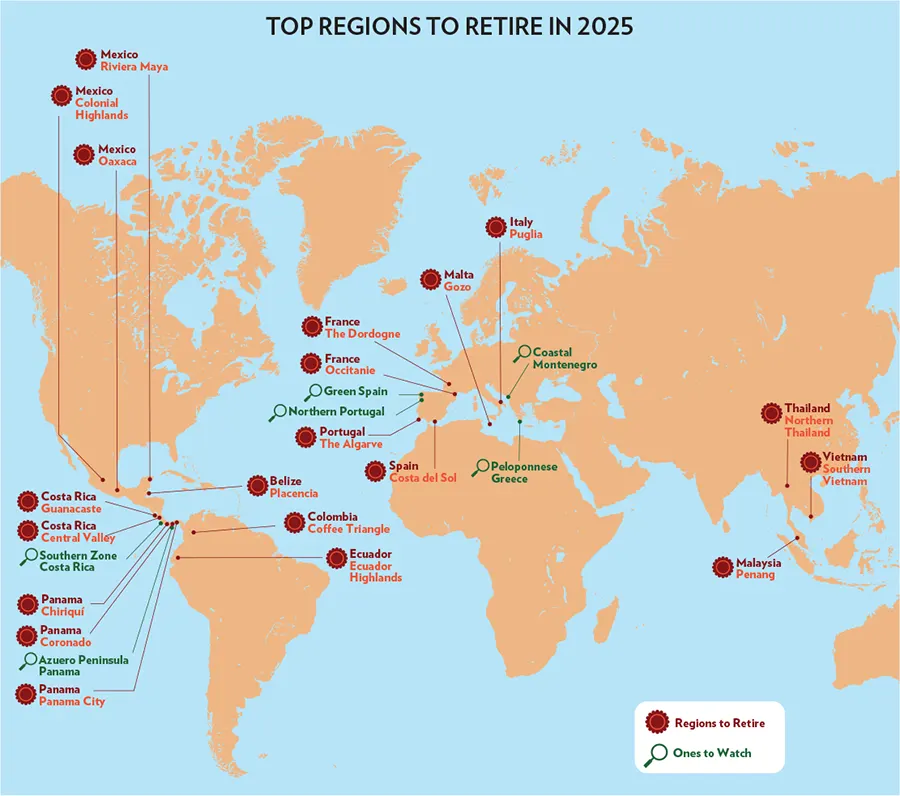
The World’s Best Retirement Havens for 2026
The World’s Best Retirement Havens for 2026
24 Countries Compared, Contrasted, Ranked, and Rated. You don’t have to be rich to enjoy a pampered retirement, you just need to know where to go. With our 35th Annual Global Retirement Index, our experts hand you a detailed roadmap. Details—and a Special Offer—Here

By submitting your email address, you will receive a free subscription to IL Postcards, The Untourist Daily and special offers from International Living and our affiliates. You can unsubscribe at any time, and we encourage you to read more about our Privacy Policy.
